Fly fishing gear care is important to ensure that your rod, waders, boots, and other necessities last as long as possible. Here is our complete guide!
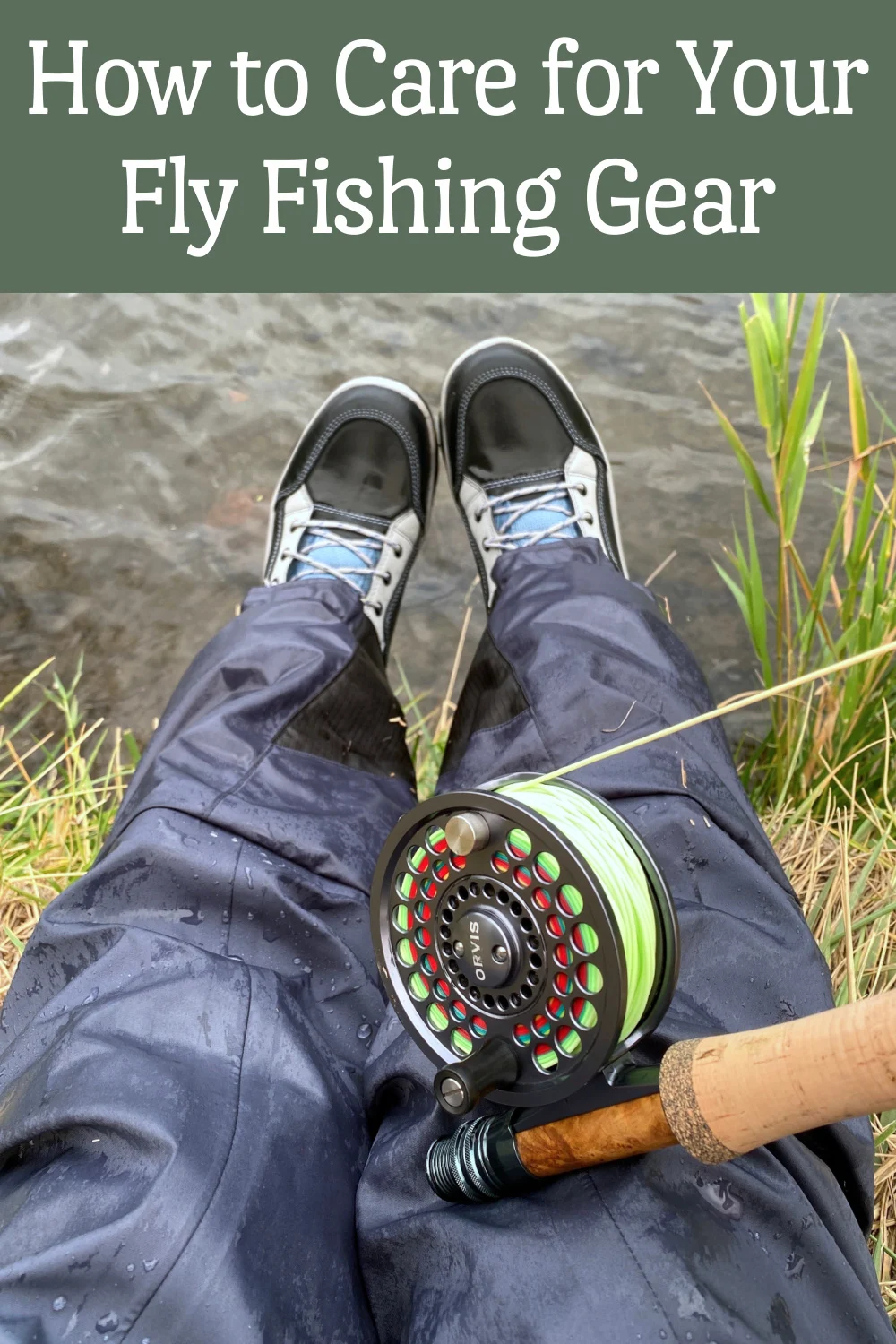
No matter the outdoor activity, there always seems to be some level of financial investment to get started. Whether it’s forking out big bucks for that first pair of skis or picking up a new pair of backpacking boots, it can add up quickly. Sometimes the initial barrier to entry keeps folks from even getting started.
As we all know, fly fishing is no different, and the initial financial barrier to entry can be significant. However, the best part about high quality fly fishing gear is that with intentional care it will last a long time.
Fly Fishing Gear Care and Maintenance
Let’s say you have done your research, tried some different gear, and made some purchases. How are you going to care for it all? Here are some ideas, thoughts, and tasks that will help make that fly fishing gear last as long as possible. Once you’ve spent the money, care for what you’ve bought with these tips!
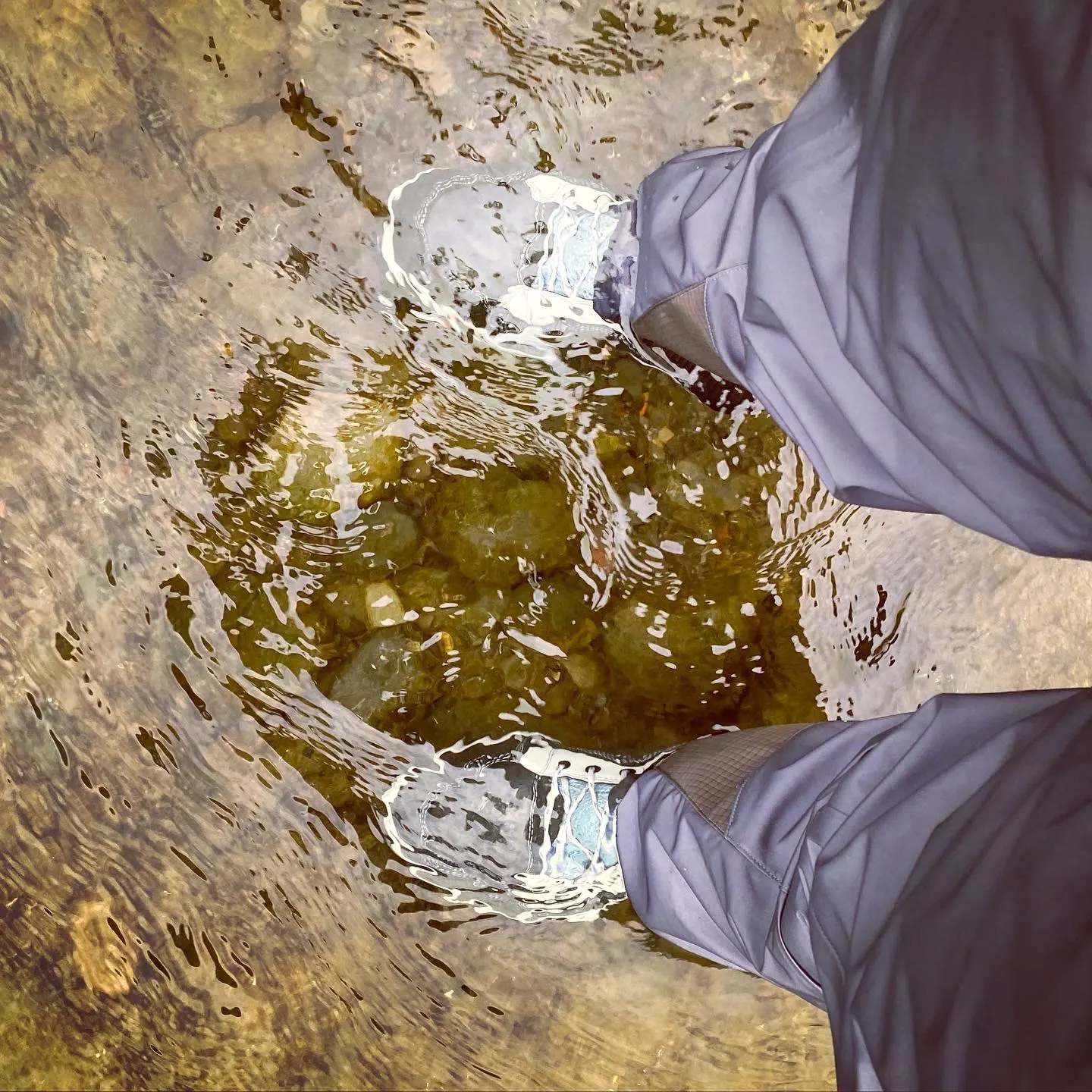
Wading Boots
We should feel bad for our wading boots. As far as footwear goes, they see a lot more wear and tear than everyday footwear. From being submerged in water over and over to long hikes on rough uneven ground, they get a lot of abuse and exposure to different conditions.
Cleaning
After a day on the river in bulky, heavy boots, it’s understandable to want to get them off and chuck them in the back of the rig in favor of some flips flops. But don’t do that.
Grab a brush and take a moment to scrub them clean. Not only will you get the debris off the boots, you will also help cut down the migration of invasive species. The trick is to keep that porous leather clean!
Drying
As soon as you get the chance, you need to get those boots dry. Take out the footbeds, make sure they are clean of debris, and then set them in a dry, ventilated space. Be careful not to leave them in the hot sun for extended period of time because the heat can compromise adhesives that keep the boots together.
Hopefully it goes without saying, but please don’t put your boots in a dryer . . . more so to save your dryer. Once dry, dump out any leftover debris, refit the insoles, and store them in a cool, dry space.
Maintenance
More than likely your wading boots will have full leather or synthetic leather construction. Leather needs to be conditioned. Find a good leather conditioner and give those boots some love. Not only will it extend the boot life, it will make them softer and more comfortable.
It doesn’t hurt to add a waterproof treatment on the leather to keep the pores from absorbing water. You might as well check the integrity of the lace eyelets and the outsole studs so you don’t have any surprises on your next trip. A little bit of shoe glue can keep the rubber toe cap firmly secured after long use.
Tip: have a set of extra laces in your travel bag in case of breakage.
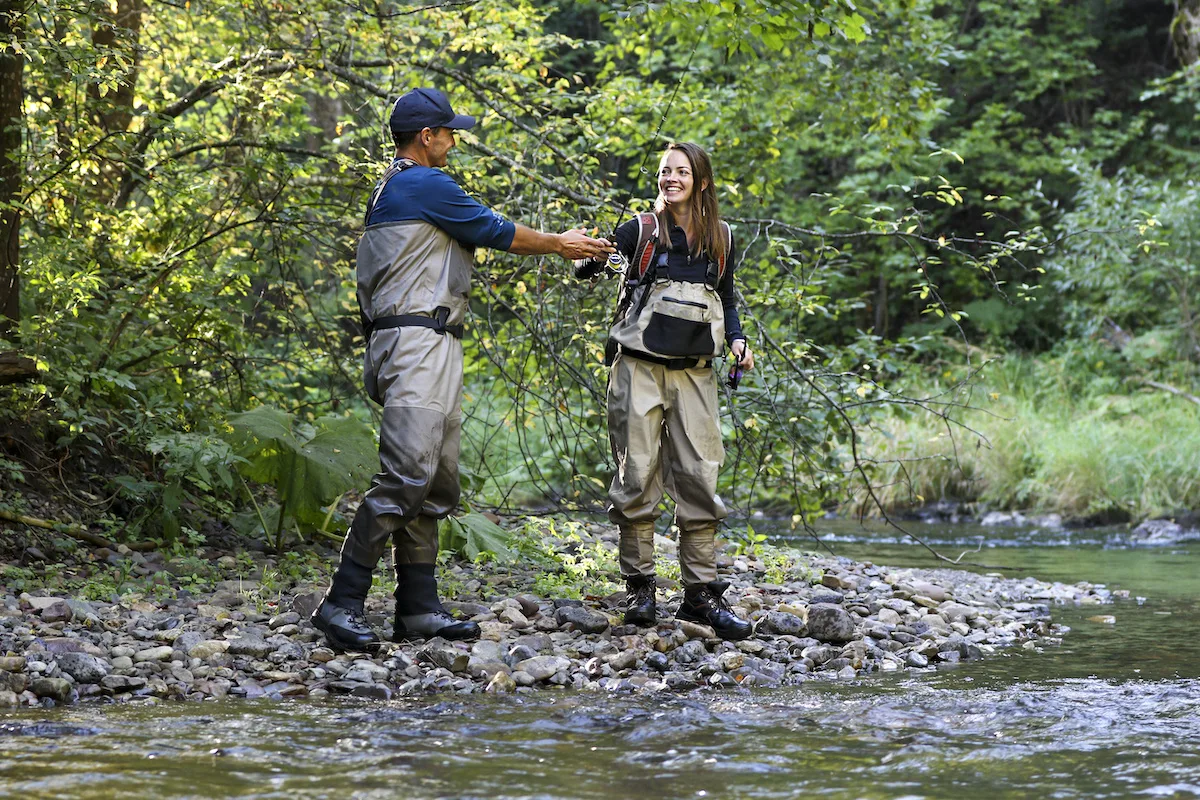
Waders
Arguments could be made around which piece of fly fishing gear is the most important. However, if it isn’t 80 degrees with the sun out, that argument might be a quick one.
We want to stay dry and warm on most days, and compromised waders can really make a fishing day miserable. With a little care and maintenance, your waders will last a long time.
Before talking through some ideas on care, it’s important to remember how waders are constructed. Gore-Tex membrane lining with seams taped to insure they stay waterproof.
In addition, they have a DWR (Durable Water Repellency) treatment on the outside to keep them from soaking up water that blocks the Gore-Tex’s ability to breathe. The idea is that you are protected from the outside, but don’t get clammy on the inside too.
The more you crease and bend Gore-Tex and the supporting taping, the more compromised the material can get. With that said, make sure you get waders that fit. Big, baggy waders that don’t fit will break down faster. Not to mention, they are a hazard in the water when wading.
Drying
You need to make sure you get your waders are dried both inside and out after every use. Keeping them dry allows for the materials they are constructed with to do their job.
Additionally, there is no better way to find yourself with a moldy pair of waders than by tossing them wet in a dark garage or shed. Prolonged moisture can also break down the adhesives that keep the seam taping together.
Yes, you can put them outside to dry, but don’t leave them in direct sunlight for too long. The heat will soften the adhesives binding the seam taping. A seam opening up is not a quick fix.
Cleaning
It is really easy to leave a beautiful clear river and think that your gear doesn’t need much cleaning. “Everything needs to be cleaned after use” is a good rule of thumb. We are lucky enough to have fabric technology built into even our fishing gear, but it requires cleaning.
Gore-Tex is porous and has a breathability component that keeps you from sweating out the inside of your waders. Dirt, oil, and all that gross stuff from your body can block the fabrics performance. Some basic dish soap and warm water on a wash cloth will keep things clean and functioning longer.
On the outside you have cleaning to do as well. You need to keep the DWR treatment (on the outside of the waders) clean and able to bead up water to shed it. It you see the outside of the waders holding water, that means the DWR is not functioning and the breathability is being compromised.
Additionally, if you are getting a chance to use your waders around saltwater. you need to rinse them with freshwater and get them dried. Saltwater isn’t good when left sitting on your gear.
Patching
No doubt you will get some holes in your waders. They will start small, and you will start by feeling some water in your sock or having wet pants after a day on the river. The best part is that they are easy to fix, and the wader manufacturers like SIMMS have great repair videos on how to do it at home with rubbing alcohol and a patch kit. See a video here.
Storage
This one is pretty simple . . . you don’t want to crease your waders. Every fold, every crease, every time you wad them up breaks down the Gore-Tex and taping that keeps you dry. If you can, store them flat. If you don’t have a place for that, make sure they are hanging in a cool and dry place.
If you are traveling with waders, you can’t really avoid having them in a duffel or suitcase (would be great to see someone on a plane in waders!), but try to roll them up instead of folding them into your bag.
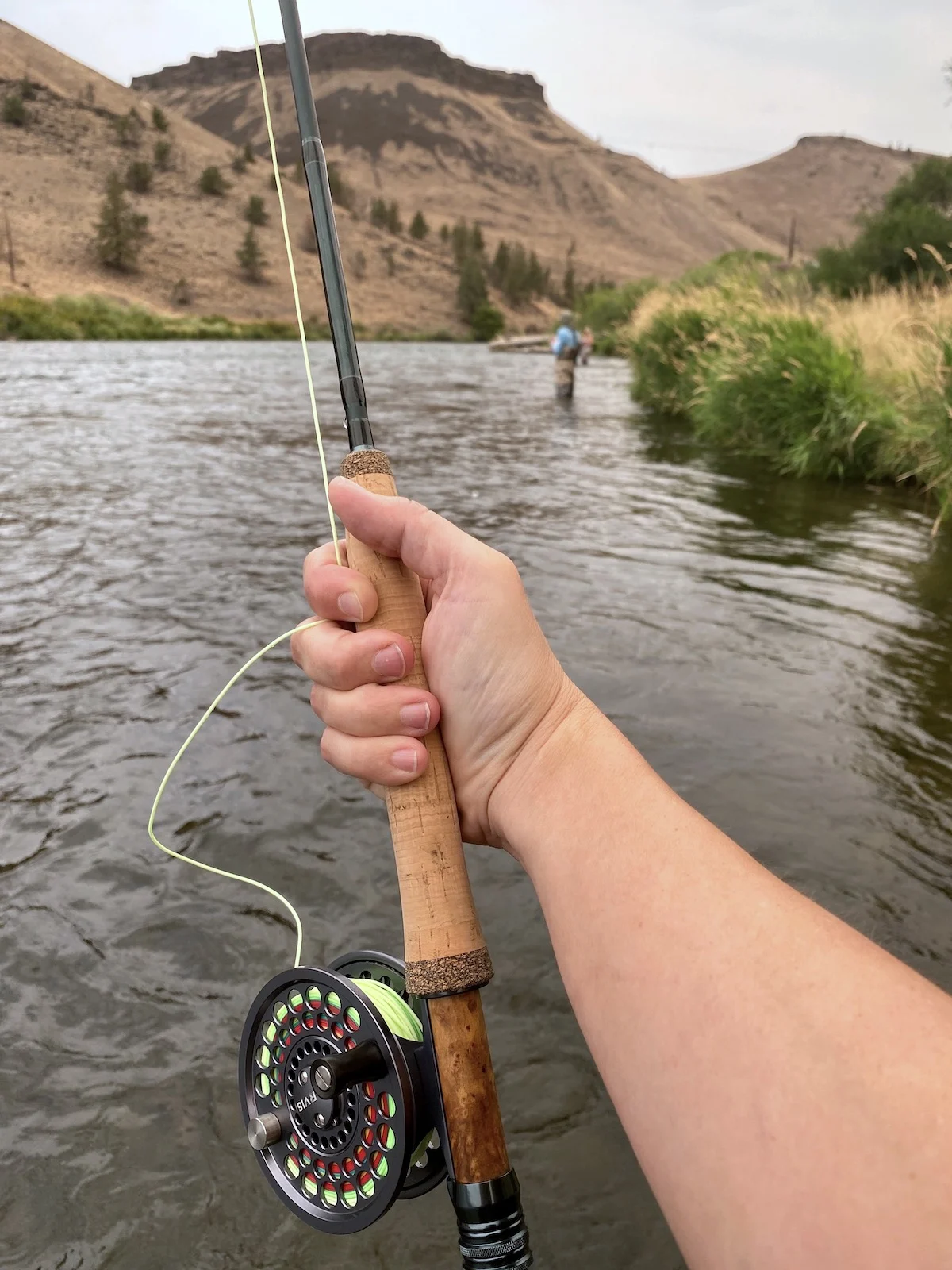
Fly Rods
It’s so easy to forget about your fly rod when it comes to maintenance. It doesn’t seem dirty, it doesn’t seem wet, but there are still things to do to preserve your investment.
The idea is that you get to keep that fly rod in your portfolio forever if you take care of it well. There are definitely little things you can do to keep the rod performing up to expectations.
Treatment
There are just some things that you never do with a fly rod. First, don’t reach up and bend the tip down to get line out. Never bend an individual section.
This even applies to breaking off flies where you should pull the line directly back at you with the tip pointed at your snag. Don’t stress the rod unnecessarily when the entire system isn’t working together to support the tension.
Don’t forget, you are probably working with a graphite rod. Graphite can get nicks and cuts from rocks and branches that compromise the integrity of the rod. Additionally, your fly line won’t appreciate rubbing against those imperfections.
Cleaning
Like all of your equipment, make sure your rod is clean. A little soapy water and washcloth will do wonders, especially if you have exposed the rod to saltwater. Salt can be very corrosive and you need to get saltwater off all your gear before storing.
Does your cork handle need to be treated? The answer is no . . . let it get weathered and experienced. If for some reason you do want to clean it up, there are some treatments that will make it look almost new.
One ongoing treatment your fly rod will love you for is a little wax on the ferrules. Every 4 – 5 cleanings, take something as accessible as candle wax and lube them up, removing any visible chunks or leftover pieces.
Storage
It feels a little repetitive to say this . . . but make sure your rod is clean and DRY. So many of us are guilty of getting back to the car, sliding the rod back in the bag, throwing it in the tube and rolling out.
If that happens, make sure to get that rod back out at home to air dry. Better yet, if you can store it out of the rod tube, even better for the rod and possible pressure on the guides.
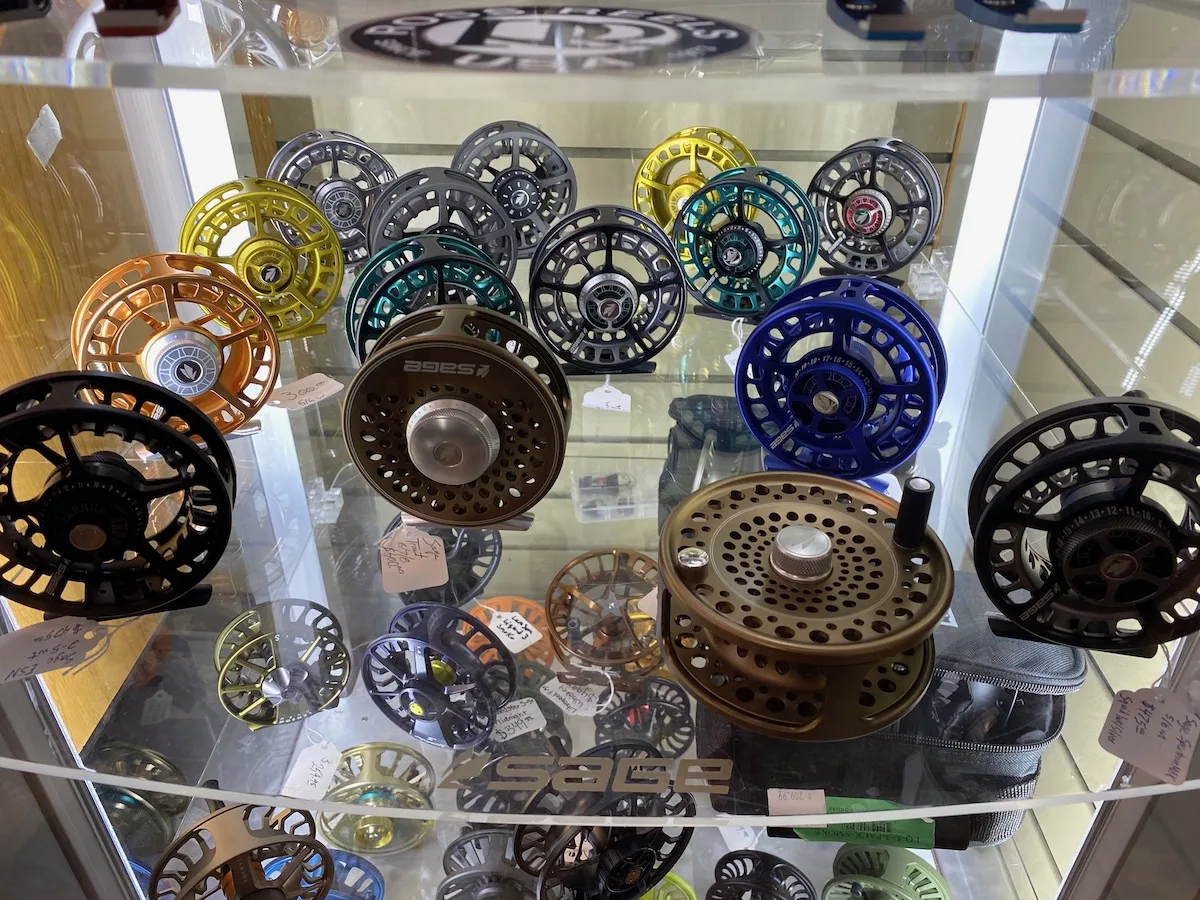
Fly Reel
Fly fishing reels are works of art. The designs, engineering, and artwork make them hard to put down. If you have ever fished with someone that owns an Abel Reel, it’s endearing watching them baby their reel throughout a trip.
The opposite is true when you watch a friend beat the hell out of their reel. Reels are far more than line storage, and when that dream fish is on the line, you want to feel confident that your reel is ready to go.
Just like your fly rod, take care of your reel(s) and they will last forever.
Treatment
Believe it or not, your reel doesn’t need to get wet! If you pay attention throughout the day you can actually keep it from getting wet. Anytime you need to work on your knots or line just put the rod under your arm.
At the minimum, find some grass to set the rod butt on if you have to. If it has to get wet it has to get wet, but don’t put it in dirt.
The last thing you want to deal with is dirt and debris in your reel system. You don’t have to spend any time in the reel system cleaning and lubricating if you keep that dirt out.
As a personal favor, please don’t ding up your reel using your rod hand to steady yourself across boulders, etc. It’s just hard to watch.
Cleaning
There isn’t a whole lot you have to do if you keep the dirt and grime out of the reel system and spool. Just rinse it out with clean water, and leave the spool and reel separated to air dry. If you have been saltwater fishing (lucky), then you might need to give things a better rinse.
Storage
Once everything is dry, reassemble the spool and reel, tucking it back into its neoprene case. Find a cool place to store it so the line keeps its shape and is ready to go on your next trip. It the reel is going to be tucked away for a while, go ahead and reduce the drag system all the way. Just let everything relax.
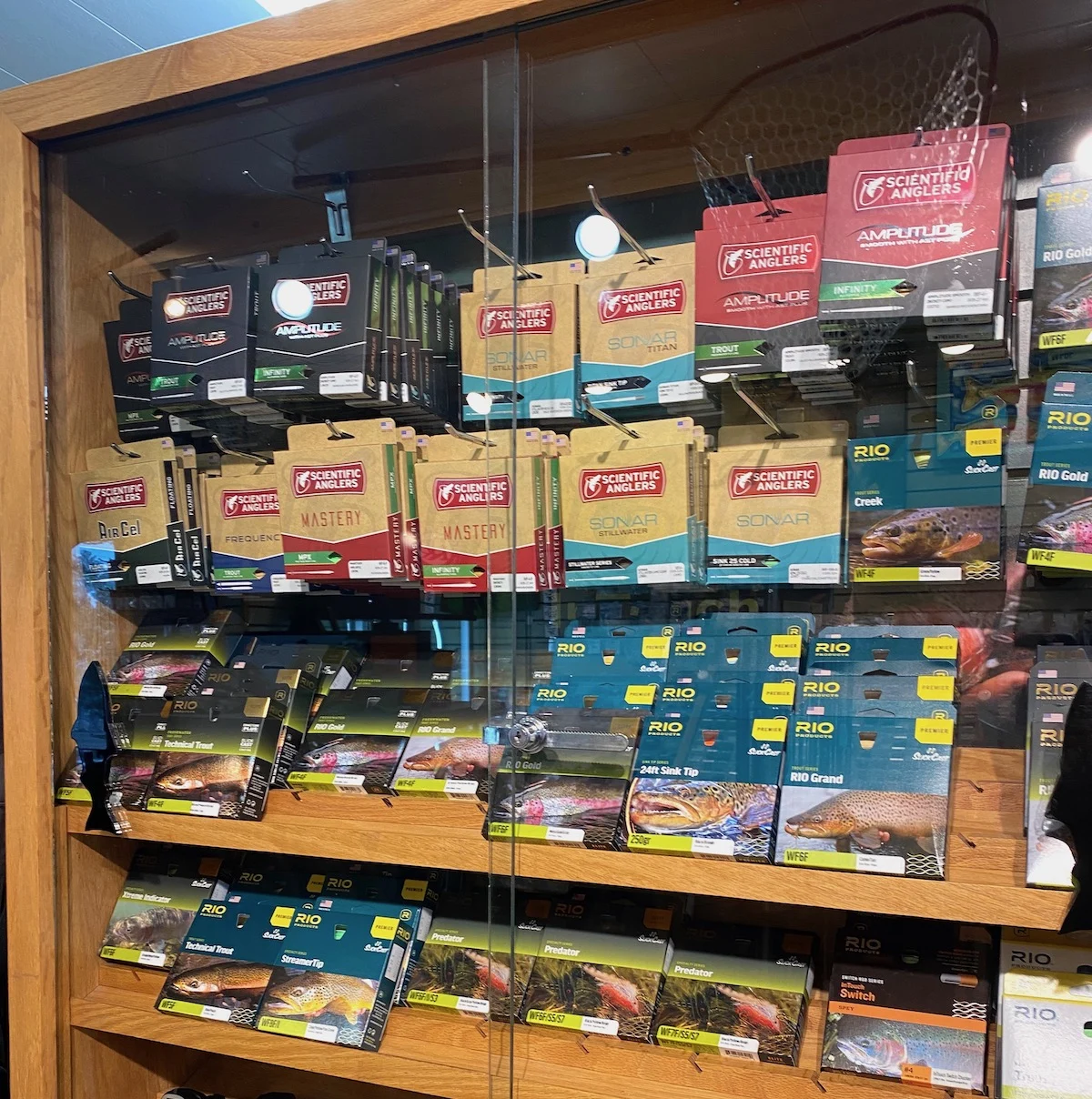
Fly Line
In a previous post, we talked about how your rod selection, weight of the rod, the reel choice, etc all have to do with supporting the fly line’s job of delivering your fly where you want it, and how you want it presented. It might be the most important part of this whole frustrating sport. Let’s take care of our fly line so it can do its job.
Cleaning
Over time your fly line is going to start to get river build-up on it. It happens slowly, and won’t be something you have to address on each trip. Every 3 – 4 trips take some mild soap or detergent with a warm washcloth and gently pull your line through the cloth. It doesn’t take much.
Make sure to give the line a rinse too. A nice cleaning will help the line slide the guides better, and get it floating again.
Storage
More than likely your line will be tucked away on its spool and reel until next use. Make sure your line fits your reel, and that you haven’t added too much backing where the line, reeled in, still hits the frame of the spool. Stored tight like that in a warm location will damage the structure of the line.
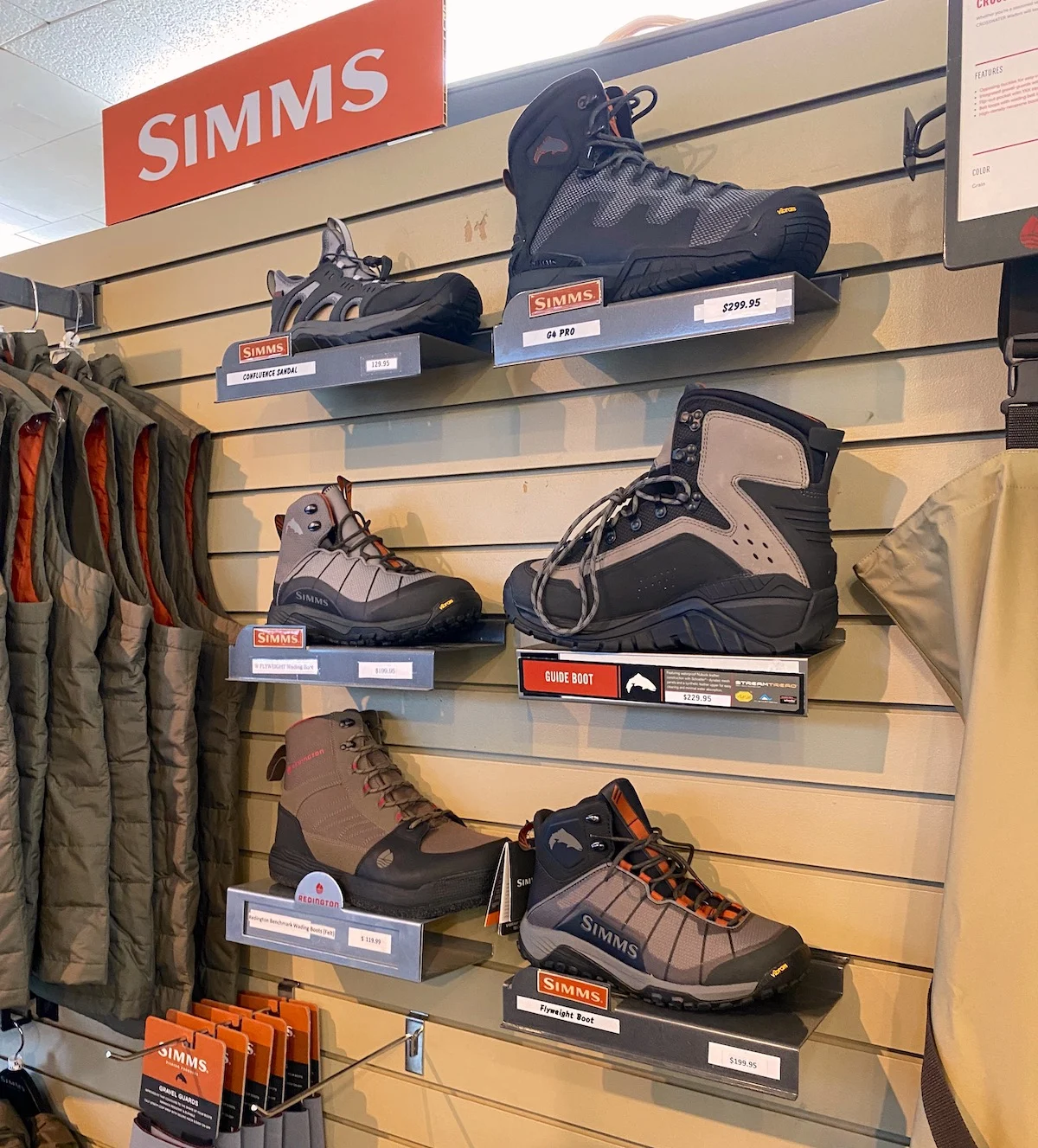
Final Thoughts
Not only will the proper cleaning of fly fishing equipment (especially boots, waders, and nets) make them last longer, it will help prevent migration of invasive species. Unfortunately, we can carry bio-organisms from river to river that over time negatively impact river ecosystems.
Many friends of fly fishing now recommend disinfecting your equipment when fishing different rivers. Definitely read up on how to effectively disinfect your equipment depending on the river you are in.
Do you have any tips or hacks for fly fishing gear care? I’d love to hear them! Let me know in the comments.
